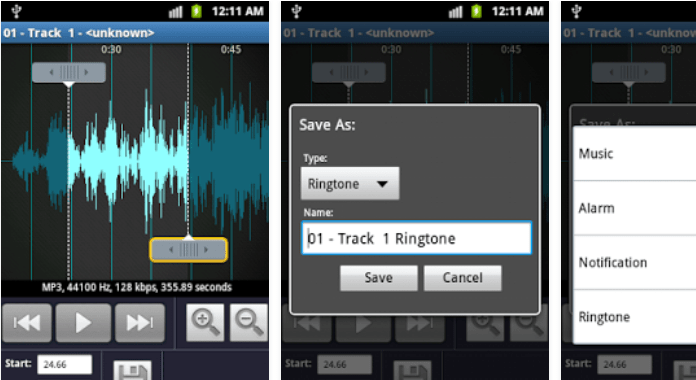

#ANDROID RINGTONES ANDROID#
Immediately after you do that, you can instantly download it to your Android device.
#ANDROID RINGTONES HOW TO#
Follow the previous step-by-step directions on how to establish and assign ringtones successfully.Īn additional possibility for you is to upload the ringtone to a cloud-based account like Google Drive or OneDrive. If you have trouble locating a specific folder with this name, you will need to create one yourself. After it acknowledges it, make your way to your phone’s internal storage. Step 2: Wait a few moments for your computer to identify the device. Step 1: Find a USB cable and plug it into your phone, then plug the other end into your computer to stabilize a secure connection. Once you’re done making a ringtone on your computer, you can upload it onto your phone in a few simple steps. Copying your ringtone to your phone’s internal storage Once done, follow the steps above on how to set and assign ringtones. Step 4: Click the iPhone icon in the lower-right corner. Step 3: Choose the Output File Name and Output Folder to save your ringtone. You can also manually input the ringtone’s exact start and stop times if you prefer. Step 2: Move the selection handles to select the portion of the song you want to use. If you don’t have the program already, you can snag it here. Step 1: Launch the program and click Browse to locate the song you want to convert. How to make a ringtone using AVCWare Ringtone Maker (Windows)ĪVCWare allows you to create ringtones simply by choosing your song, selecting the portion of the song you want to use, and exporting it as an MP3. Step 8: Select a name, save location, file format, and quality in the pop-up window. Step 7: Once you’ve settled upon a ringtone selection, click Share on the menu bar followed by Export Song to Disk. Step 6: On the menu bar, go to GarageBand > Preferences > Advanced and make sure the box beside Auto Normalize is checked. Remember, Android ringtones typically run in 30-second (or less) loops. Note that the cycle is highlighted in yellow so you can see where the clip begins and ends. Do the same on the right end to set the stopping point. Shift the arrow left or right accordingly to set the ringtone’s starting point. Step 5: Hover the cursor over the left end of the yellow highlight shown on the number line. Leave this button toggled on until the end. Step 4: Click the Cycle button to the right of the red Record button. It loads into the first (and only) track. Step 3: Locate your song using Finder and drag it into GarageBand. Make sure No Input is selected before clicking the Create button. Step 2: Select the Microphone tile on the pop-up window to import an audio file.

Step 1: GarageBand opens with New Project selected by default and Empty Project highlighted. Make sure GarageBand is up to date before opening the app. It comes bundled with all Macs, so there’s no need for an additional purchase.
#ANDROID RINGTONES FREE#
GarageBand is another free alternative that lets Mac users create their own custom ringtones for Android.


 0 kommentar(er)
0 kommentar(er)
